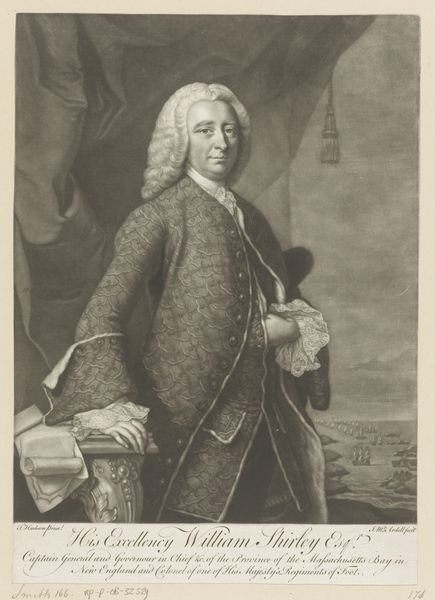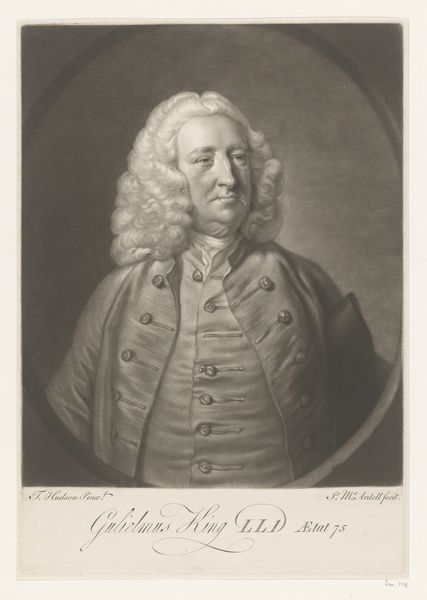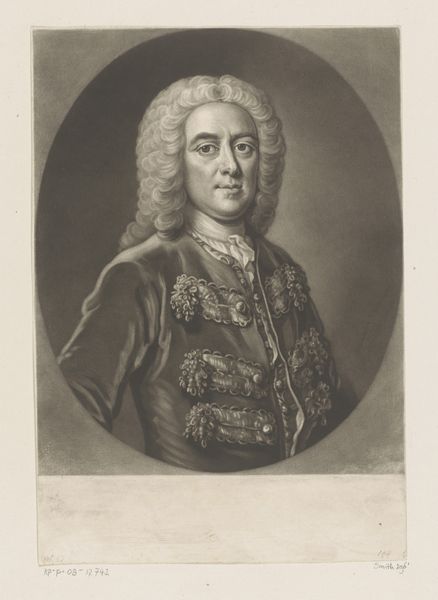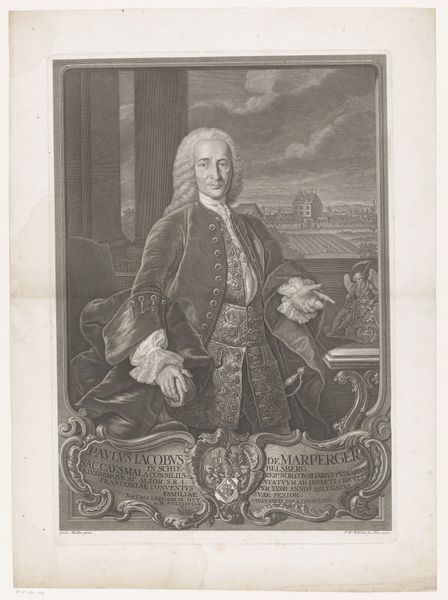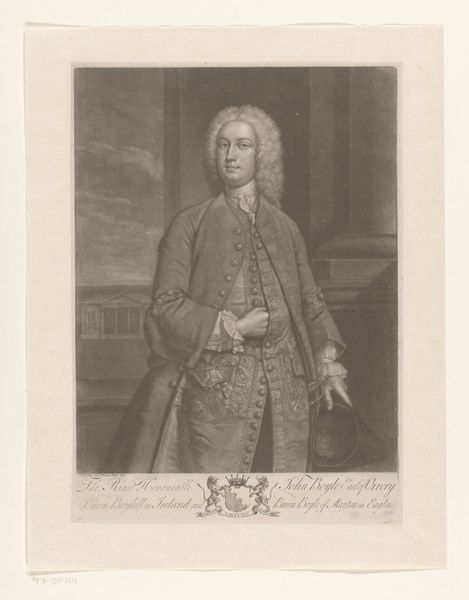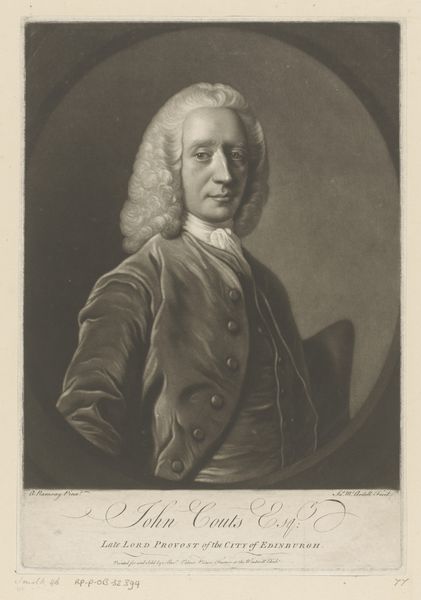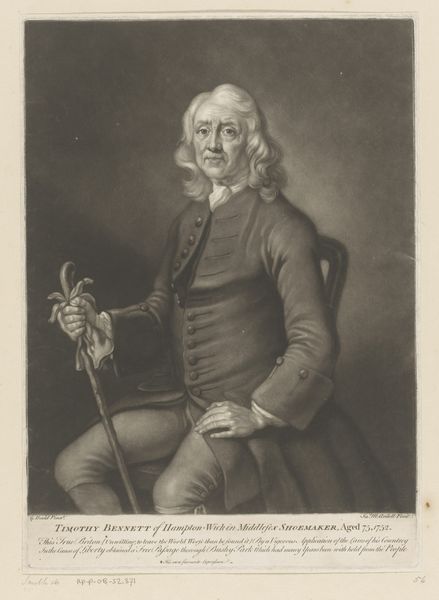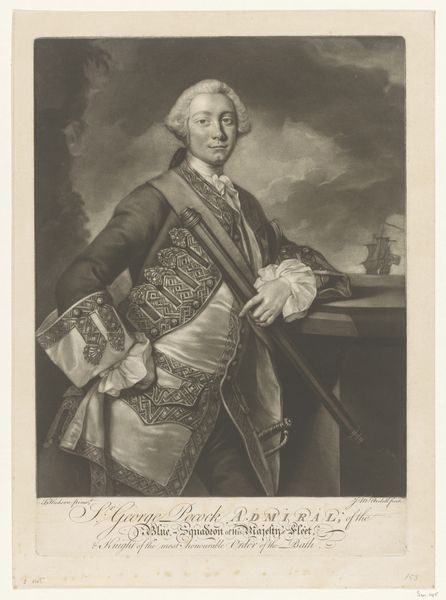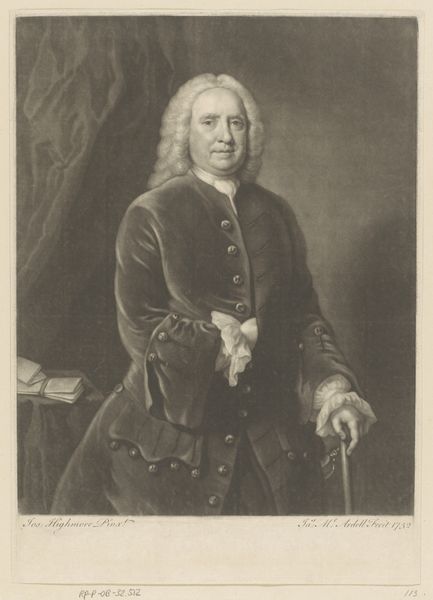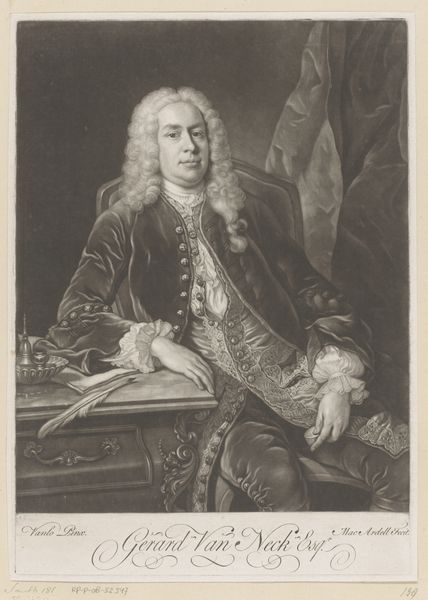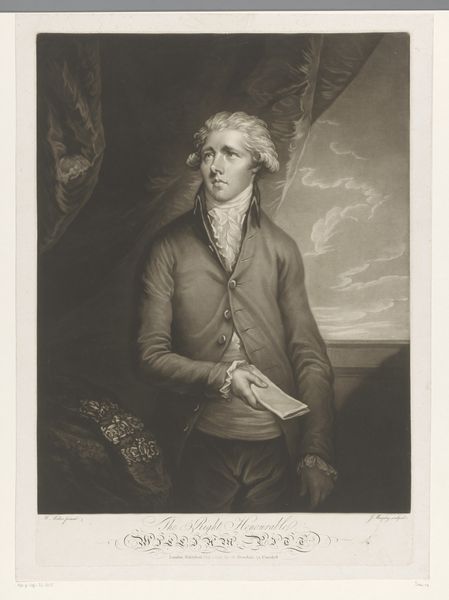
print, engraving
#
portrait
#
baroque
# print
#
form
#
line
#
history-painting
#
engraving
Dimensions: height 427 mm, width 300 mm
Copyright: Rijks Museum: Open Domain
Editor: This is a print of John Montagu, dating back to sometime between 1745 and 1765. It's attributed to James McArdell and resides here at the Rijksmuseum. I’m immediately drawn to the composition; the stark contrast and how the engraver created such depth with simple lines. How do you interpret this work through a formalist lens? Curator: I appreciate your initial observations about line and depth. Let us examine this engraving's formal elements more closely. Consider how McArdell has constructed a portrait using the fundamental principles of baroque aesthetics. We observe a clear hierarchy; Montagu is central. Line becomes not just a delimiter but an active shaper of form. Note, too, how the contrast establishes the piece's tonal range, guiding our eye and lending the work a dynamism characteristic of its time. Do you perceive how these formal elements reinforce or perhaps subvert conventional baroque ideals? Editor: I see what you mean about hierarchy, and I agree with the contrast – it gives such definition to his wig and clothing. What’s interesting to me is that it subverts the conventional ideals because there's very little color, it’s nearly all in monochrome, isn't it? Curator: Precisely. The near absence of color becomes a statement itself. It forces a deeper engagement with the other elements, heightening the interplay of light and shadow. It accentuates the figure's stoic quality. Ultimately, McArdell invites us to consider form as the primary conveyor of meaning and beauty, rather than relying on color or narrative details to capture our attention. Editor: That's fascinating, viewing the absence of color as a deliberate decision. Thanks for highlighting how the engraver focuses our attention. I'll certainly be observing art differently from now on! Curator: And I have, perhaps, remembered that interpretation of art is best if kept vibrant and fluid. Thank you.
Comments
No comments
Be the first to comment and join the conversation on the ultimate creative platform.
